Are you planning to live in Tokyo and wondering which area to choose? Finding the perfect apartment can be both exciting and stressful since you have to strike a delicate balance between the cost of rent, convenience, and, last but not least, your personal preferences. Choosing the right neighborhood can be just as challenging.
Tokyo generally ranks as one of the most expensive cities to live in the world, but you might be surprised to see how affordable rent actually is here. Compared to the U.S., rent in Tokyo is cheaper than in most cities (not just the biggest cities).
So, let’s outline some key considerations and check out some of the best neighborhoods to live in Tokyo!
Looking to live in Japan and want to learn Japanese for daily life? Join fun, flexible part-time lessons at Coto Academy and learn practical Japanese to get started! Contact us today!
Things to Consider When Choosing Where to Live in Tokyo
1. Cost of apartments in Tokyo wards
Tokyo’s 23 wards vary widely in apartment rent prices depending on location, accessibility, and neighborhood atmosphere. Central wards like Chiyoda, Minato, and Shibuya tend to have higher rents due to their proximity to business districts, entertainment, and shopping areas. For example, a one-bedroom apartment in Minato might cost between ¥150,000 to ¥250,000 per month or more.
On the other hand, wards further from the city center, such as Edogawa, Adachi, or Nerima, typically offer more affordable rents.
2. Safety & Cleanliness Of Neighborhoods In Tokyo
Safety is a very reasonable concern and is likely one of your top priorities. Even though Japan is generally safe and clean, there are still neighborhoods that might fall short of Japan’s high standards. Areas such as Shibuya, Shinjuku, or Roppongi, while convenient, might not be the cleanest or the safest due to the closer proximity to larger crowds, bars, and late-night entertainment. Areas around major stations tend to have more crime (mostly petty, less serious offenses).
Tokyo is mostly safe, but some areas are safer than others. Quieter neighborhoods are often just one more transfer away from the major stations. They are only slightly less convenient but still very accessible to the entertainment hubs of Tokyo.
3. Things To Do in Tokyo
When it comes to things to do, certain areas will tailor to certain preferences. If you like being close to places to shop, you’ll need to find an area closer to shopping centers or malls. Shopping centers or malls are actually pretty common throughout, so you don’t need to go to the city center for shopping.
However, you might have particular tastes and niches that particular areas cater to, such as the youth fashion of Harajuku, the bohemian charm of Shimokitazawa for thrifting, or the Otaku culture of Ikebukuro. Apartment options in these types of districts will have higher rent, but there are plenty of neighborhoods with direct access that are much more affordable.
Want to explore one of Tokyo’s busiest districts? Check out 22 things to do in Shibuya and where else to go besides Shibuya.
What is the Average Rent in Tokyo?
The average monthly rent in Tokyo is around ¥80,000 to ¥150,000 for a one-room apartment. However, prices can rise significantly depending on the ward you live in. Keep in mind that moving into an apartment often comes with several initial fees, which can total two to three times the monthly rent!
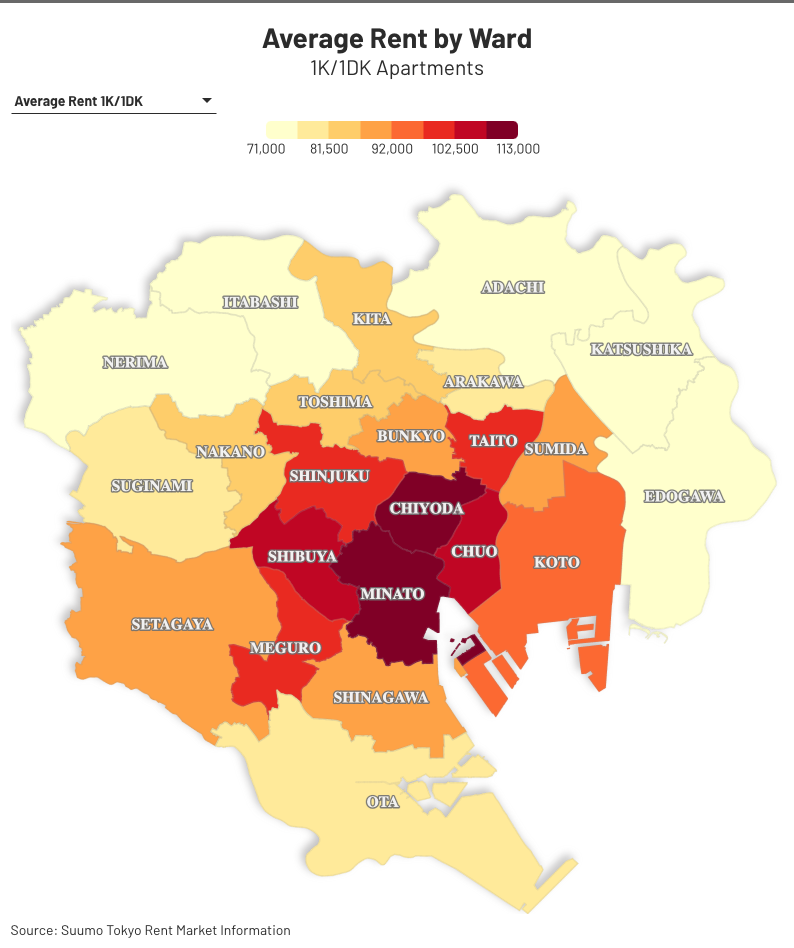
For an interactive visualization with the option to toggle between different apartment room categories (1R, 1K/1DK, 1LDK/2K/2DK, etc.), check out: Average Rent Price (JPY) By Tokyo wards.
Initial Fees
While rent is lower in Tokyo, initial fees are usually the biggest burden when finding the perfect apartment in Japan. For an apartment whose rent is ¥70,000, this could be a typical breakdown:
| Item | Cost |
|---|---|
| Security deposit or shikikin (敷金) | 1 – 2 months’ rent: ¥70,000 – ¥140,000 |
| Key money or reikin (礼金) | 1 – 2 months’ rent: ¥70,000 – ¥140,000 |
| Brokerage fee 仲介手数料 chuukai tesuryo | At most 1 month’s rent: ¥70,000 |
| Advance fee | At most 1 month’s rent: ¥70,000 (depending on what time of the month you move in) |
| Guarantor fee or hoshounin hiyou (保証人費用) | Around 50% to 120% of rent: ¥35,000 – ¥84,000 |
| Fire insurance or kasai hoken (火災保険) | Around ¥15,000 |
| Key exchange fee or kagikokan hiyou (カギ交換費用) | ¥10,000 – ¥20,000 |
| Cleaning fee or hausu kuriiningu hi (ハウスクリーニング費) | ¥10,000 – ¥40,000 |
| Total initial cost | ¥340,000 – ¥539,000 |
This is what a typical initial cost breakdown could look like. However, some of the fees may not apply to your apartment. There could also be other fees, such as the anshin hoken (安心保健) or safety insurance. Depending on the room, building features, and the contracting company, the initial fees could be a lot less. Also, keep in mind that the brokerage fee or chukai tesuuryouu (仲介手数料) is the amount you pay to the agency that helped you find the apartment. Most of the time, you would need an agent to help you find available apartments, but foreign-friendly ones tend to charge a higher rate.
Actively finding an apartment? Check out our essential vocabulary for apartment hunting in Japan!
Cost of rent in Tokyo and apartment types
Rent will vary by location, room size, quality, and age of the apartment. Of course, due to the higher demand, rent tends to be higher the closer you are to a train station, especially major ones. However, the cost of rent is largely determined by areas that are in demand. Neighborhoods closer to central Tokyo would be pricier, whereas outer areas such as Nerima, Katsushika, and Adachi are cheaper.
Apartment room sizes are categorized from 1R to 4LDK (anything more than 4LDK is pretty uncommon), with the number representing the number of rooms and the letters representing the following:
- R: Studio apartment (1R is the only available option)
- K: Rooms with a separate kitchen (i.e. 1K)
- D: Rooms with a separate dining and kitchen (i.e. 1DK)
- L: Rooms with separate living, dining, and kitchen (i.e. 1LDK)
The more rooms and features you have, such as living, dining rooms, and kitchens, the more expensive the apartment. Also, amenities such as air conditioning, balcony, parking, and lofts could also increase the cost of rent.
Best Neighborhoods in Tokyo
Of course, there’s no single “best” neighborhood that fits all criteria. That said, we’ve compiled some of the top areas in Tokyo favored by foreign residents, based on factors like affordability, popularity, and overall livability.
Most Affordable Neighborhoods In Tokyo
These neighborhoods may be a bit further from the central lines, such as the JR Yamanote, but you might be surprised by what other lines go through central Tokyo. Here are some neighborhoods where you could find the most affordable accommodations in Tokyo.
1. Itabashi
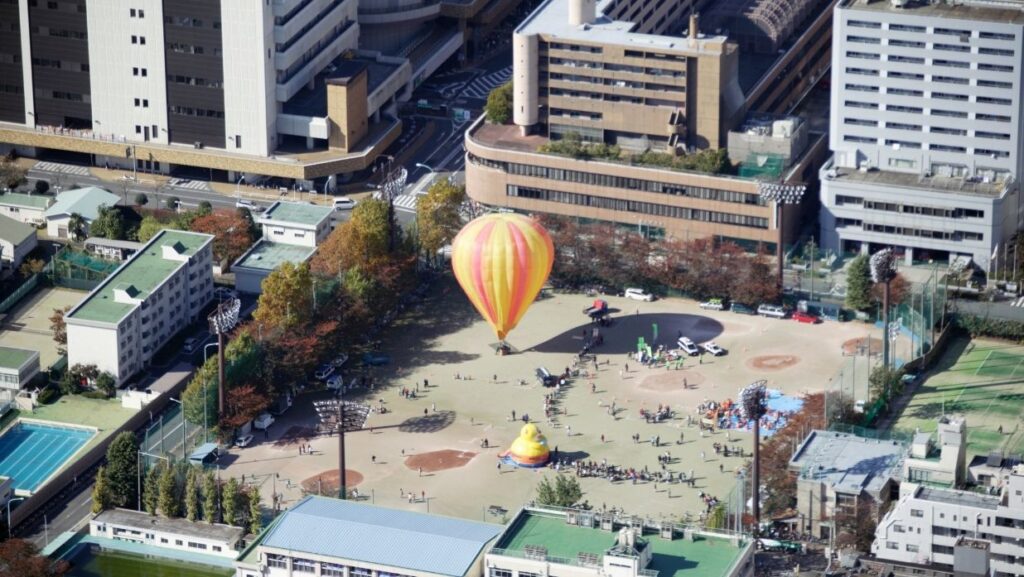
Itabashi is a suburban area that is pretty close to Ikebukuro, which is its main access point to the rest of Tokyo. The average rent in Itabashi for 1K/1DK apartments is around ¥76,000, which is definitely on the lower scale. Even though it’s a very residential neighborhood, the area has decent access to transportation and local shops.
2. Adachi
Boasting some of the lowest average rent prices in Tokyo at around ¥72,000 for 1K/1DK apartments, the area is very popular for budget-friendly accommodations. Specific neighborhoods such as Kita-senju are becoming a trendy spot to live in for their affordability, parks, and boutique shops.
Recently, transportation has been developing, allowing the neighborhoods to be more accessible. Kita-senju is relatively well connected to Tokyo and Ueno Station.
Read More: Guide to Exploring Ueno
3. Edogawa
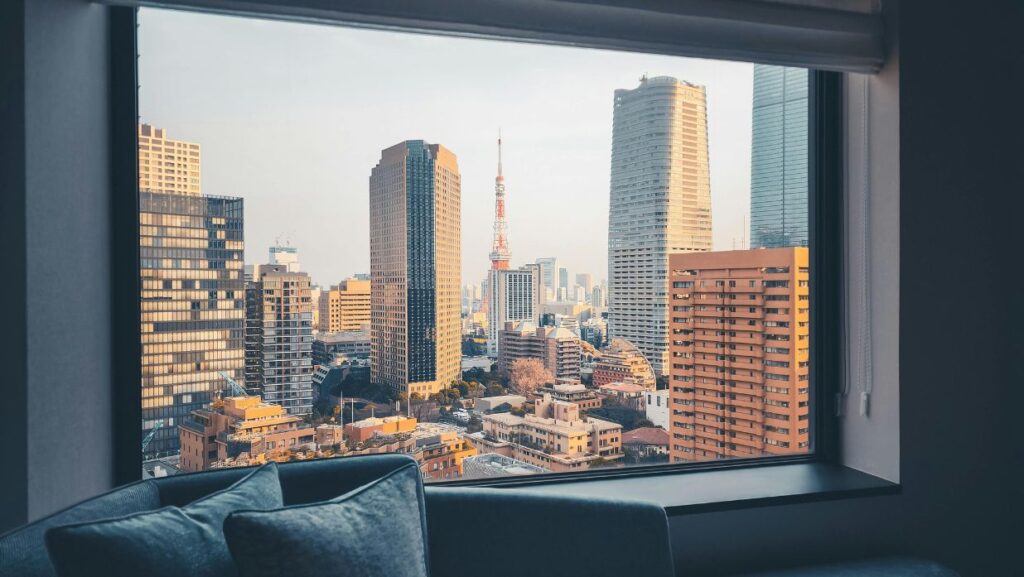
Edogawa is also one of the cheapest areas to live in Tokyo, with rent at around ¥71,000 on average for 1K/1DK apartments. The ward borders eastern Tokyo and Chiba, being relatively accessible to Tokyo Station. Edogawa is known for being close to Tokyo Disneyland and multicultural neighborhoods like Nishi-Kasai.
Most Convenient & Entertaining Neighborhoods In Tokyo
These neighborhoods are perfect for those looking for excitement and easy access to everything. They also tend to be more English-friendly, but that usually comes with slightly higher rent.
4. Asakusa (Taito Ward)

Known for its mix of historical Japanese culture and its modern allure, Asakusa is a very convenient neighborhood due to its connections and closer proximity to major Tokyo hubs. Chalk full of well-preserved Edo-style shops, riverside views, and delightful eateries, you won’t be bored in Asakusa either. Additionally, the price of apartments tends to be significantly less than neighborhoods in Central Tokyo, such as Shibuya, Meguro, or Minato.
The one drawback, however, is the rather high number of tourists, which can make the area busier and noisier. stu
5. Daikanyama & Yoyogi (Shibuya Ward)
Daikanyama offers chic boutiques, upscale dining, and shopping right at your doorstep. To top it off, it’s around a 10-minute walking distance from Shibuya Station. You can expect apartments here to reflect Daikanyama’s stylish identity with modern designs and generally higher rental prices. The area is perfect for accessing all your entertainment needs while being quieter than central Shibuya.
Yoyogi, on the other hand, is known for its access to nature, such as Yoyogi Park, international schools, and its collection of quaint residential areas. Rent here is also higher, but not the highest, and is very well connected to Central Tokyo.
6. Nakameguro (Meguro Ward)
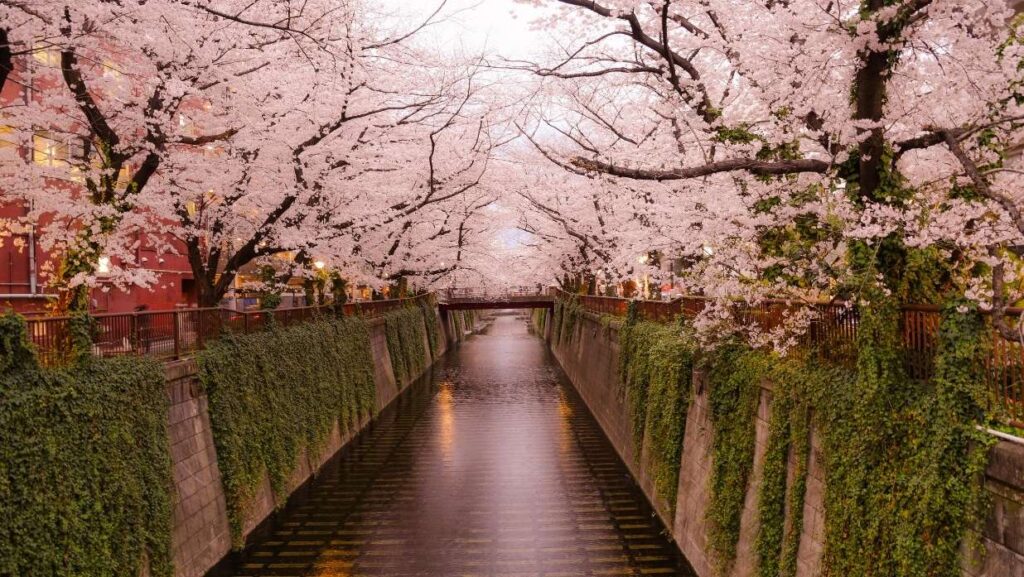
Nakameguro is an iconic neighborhood known for its charming atmosphere filled with boutique cafes and chic shops. Nakameguro is also a wonderful residential area that can actually be quite peaceful if away from the more crowded areas.
The apartments tend to be on the higher side for rent and smaller side for size. Of course, the apartments closest to the iconic Meguro River will have higher rents. Meguro River is especially popular during spring, when the cherry blossoms lining the riversides burst into full bloom.
Overall, the blend of modern and traditional Japanese experiences, as well as English services in essentials like healthcare, makes this eclectic neighborhood a very ideal location for foreigners.
7. Jiyugaoka (Meguro Ward)
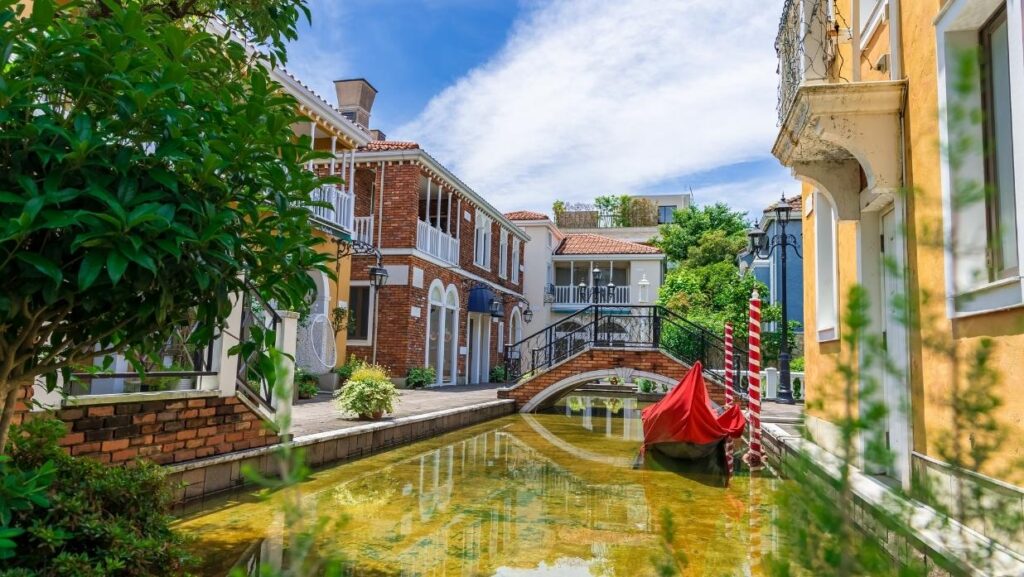
Populated with pastry shops, cafes, and boutiques, Jiyugaoka offers a calm yet trendy ambience. The neighborhood is quiet, safe, and clean, making it great for families while having direct train lines to Shibuya, Yokohama, and Central Tokyo.
Apartments tend to be more upscale in rent, but the convenience and access to fashion boutiques, artisan bakeries, and picture-esque streets are arguably well worth the price.
8. Neighborhoods in Shinjuku Ward

Shinjuku is an eclectic collection of just about everything you can imagine: businesses, entertainment, and even nice residential areas. A lot of English-speaking services in healthcare, legal matters, and entertainment tend to congregate around Shinjuku.
Visiting the popular areas like Kabukicho doesn’t exactly display the most residential image, neighborhoods such as Takadanobaba, Nishi-Ochiai, Okubo, and Yotsuya are much calmer, greener, and family-friendly. Overall, Shinjuku is the most connected station in Tokyo with access to lines going everywhere you need to go. Keep in mind, some residential areas may be further away from Shinjuku Station.
Read More: Shibuya vs Shinjuku: Which One is Better?
Best Neighborhoods in Tokyo Overall
Some Tokyo neighborhoods stand out for their unique mix of comfort, accessibility, charm, and community. Below are some of the best places to stay in the city.
9. Ota
Ota sits between Tokyo and Haneda Airport, as well as Kawasaki and Yokohama further south. Ota is strategically placed for accessing a variety of areas while maintaining a balanced cost. Neighborhoods in this area are great for families, especially if you plan to travel overseas often or have family who visit frequently.
There is plenty of entertainment around, especially if you live near Kamata. Most of Ota has nice boutiques, pockets of bars, while offering a quaint atmosphere ideal for families and younger adults alike. Ota walks the fine line between affordability and convenience.
11. Koto
Neighborhoods in Koto enjoy easy access to central Tokyo while being home to plenty of their own attractions. Odaiba is famous for being a high-tech entertainment hub with tons of entertainment, recreational activities (Fuji TV Building), and shopping centers (Diver City Tokyo). The best part is that this area is very well connected to most of Central Tokyo, but still relatively affordable.
Convenience of Living in Tokyo
In terms of convenience, most areas in Tokyo will have access to basic needs, such as supermarkets, hospitals, clinics, convenience stores, and public facilities like parks or police stations. But what makes certain neighborhoods more convenient is their accessibility to major lines and their distance from business centers in Central Tokyo.
1. Access to major lines
The most convenient neighborhoods would be located directly on major lines such as JR Yamanote, JR Saikyo, Metro Yurakucho, and Metro Marunouchi. Neighborhoods with direct access to major lines tend to be in busier areas and are more expensive.
2. Distance from major business and entertainment districts
If you want to find a job in Japan, Tokyo is its economic hub. Many offices are located in Central Tokyo in districts such as Ginza, Shinjuku, Minato, and Shibuya, so living near these areas is in high demand. Living in neighborhoods in the central district will command a higher rent and will likely have smaller rooms. But these areas would be the most convenient for work commutes or access to vast amounts of services, especially English-speaking, you wouldn’t find in further districts.
Best Tokyo Neighborhoods: Trade-Offs? Or Can I Have It All?
You may get lucky and find the perfect apartment in Tokyo that is in an affordable neighborhood, convenient, and full of entertainment. But realistically, you may have to face some trade-offs. So, we have separated the best neighborhoods based on the following criteria: Affordability, convenience, entertainment, and then best overall.
Final Thoughts
Finding your perfect home in Japan has many considerations, and the neighborhood is no exception. Your stomping ground is, in a way, an extension of your home. It’s important that you have what you need nearby, are comfortable, and feel safe in your neighborhood. Different neighborhoods in Tokyo will have their different charms and may bring new discoveries even after years of living in them.
Learn Practical Japanese for Daily Life at Coto Academy
Whatever you do, consider what is most important for you, and you will find your home in Japan! Living in Japan becomes much easier if you can speak Japanese! So check out our intensive Japanese lessons or part-time courses and start learning today!
Want to study Japanese with us?
FAQ
Which area is cheaper to live in Tokyo?
Cheaper areas tend to be further from central Tokyo. Some budget-friendly neighborhoods include Adachi, Itabashi, Kita, Ota, and Tachikawa.
Which neighborhoods do most expats live in?
Expats often live in convenient, international areas with good English services, such as Minato, Meguro, Shibuya, and Setagaya.
What neighborhoods are the nicest to live in Tokyo?
The nicest neighborhoods to live in Tokyo are places like Kichijoji, Daikanyama, and Nakameguro, known for their charm, livability, and atmosphere.
What are the most expensive areas in Tokyo?
The most expensive areas in Tokyo include Aoyama, Hiroo, and Azabu-Juban, favored for their luxury housing and prestige. Most international residents in those areas are diplomats and expats.
